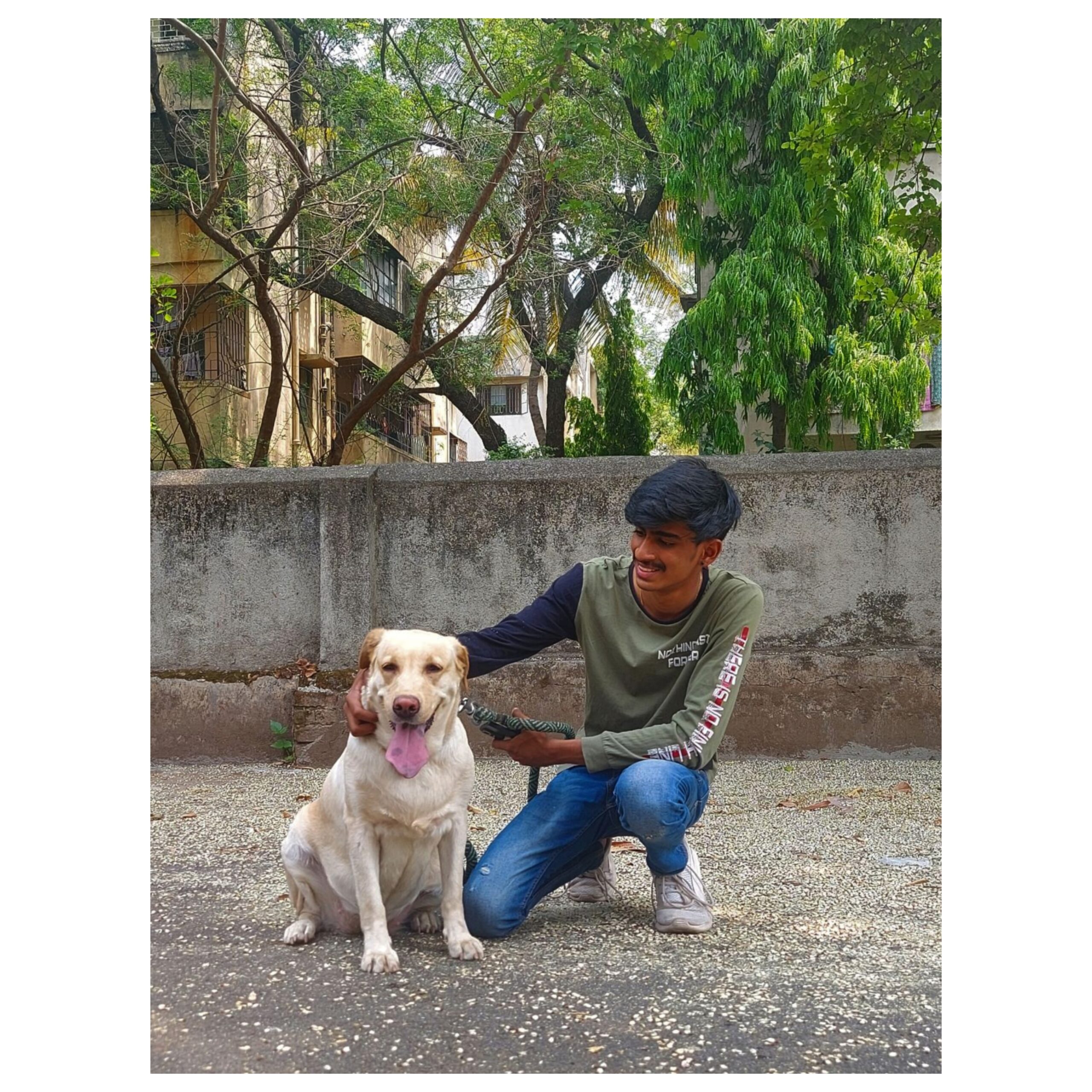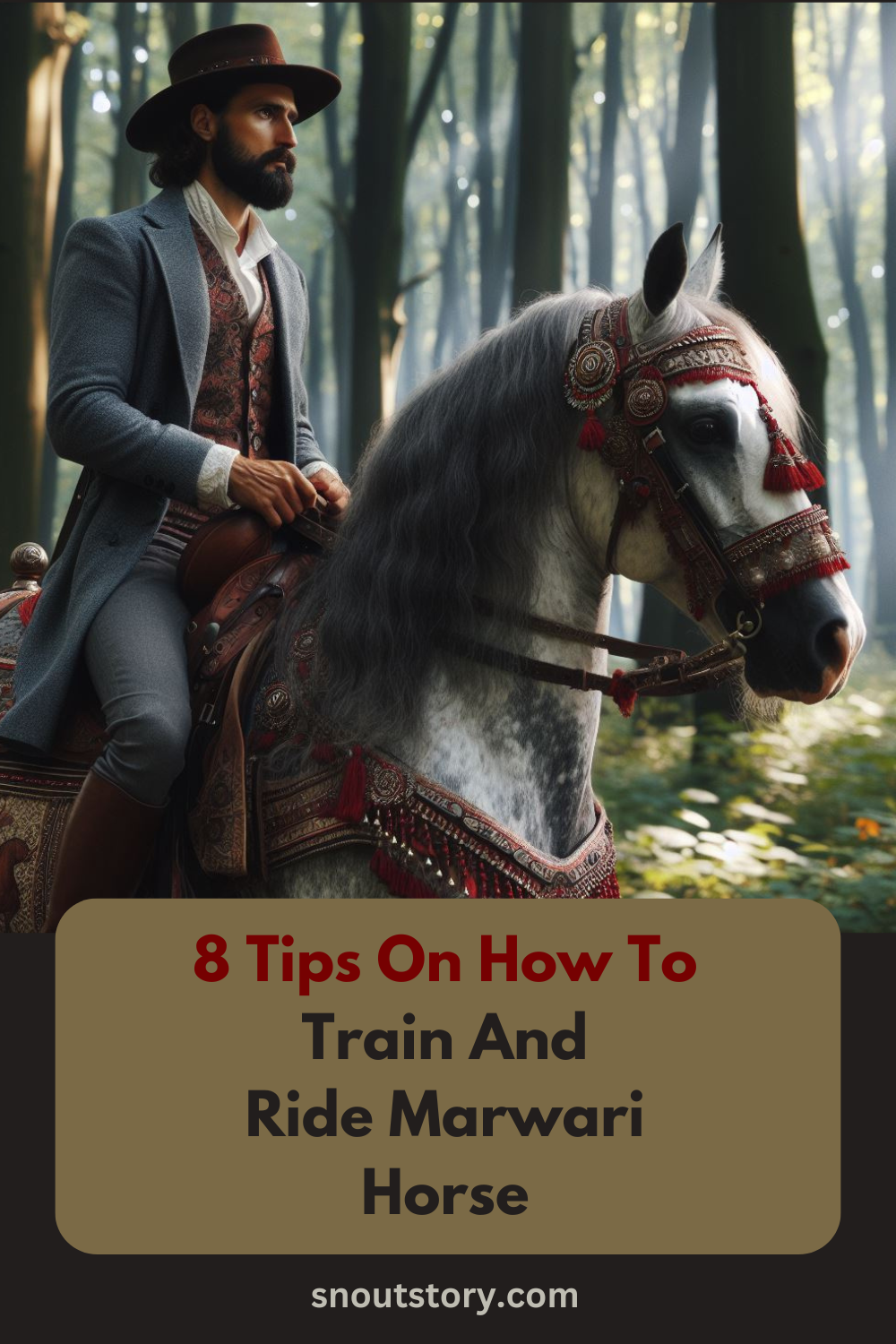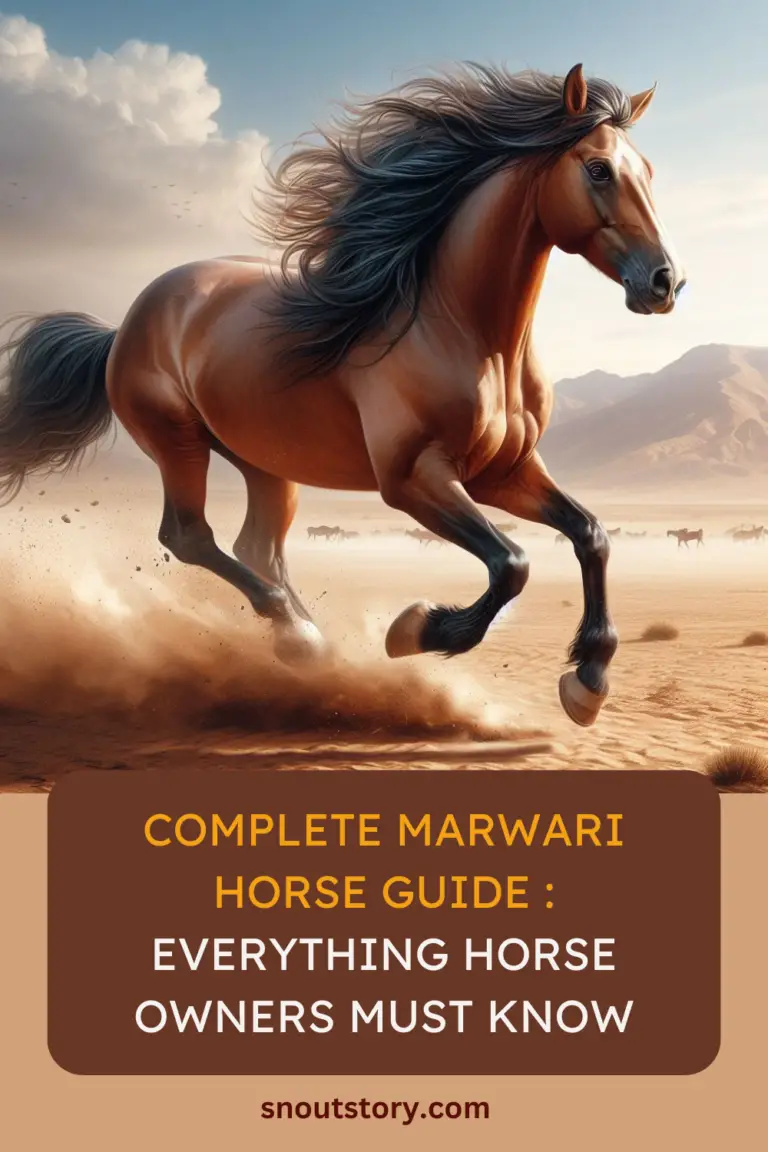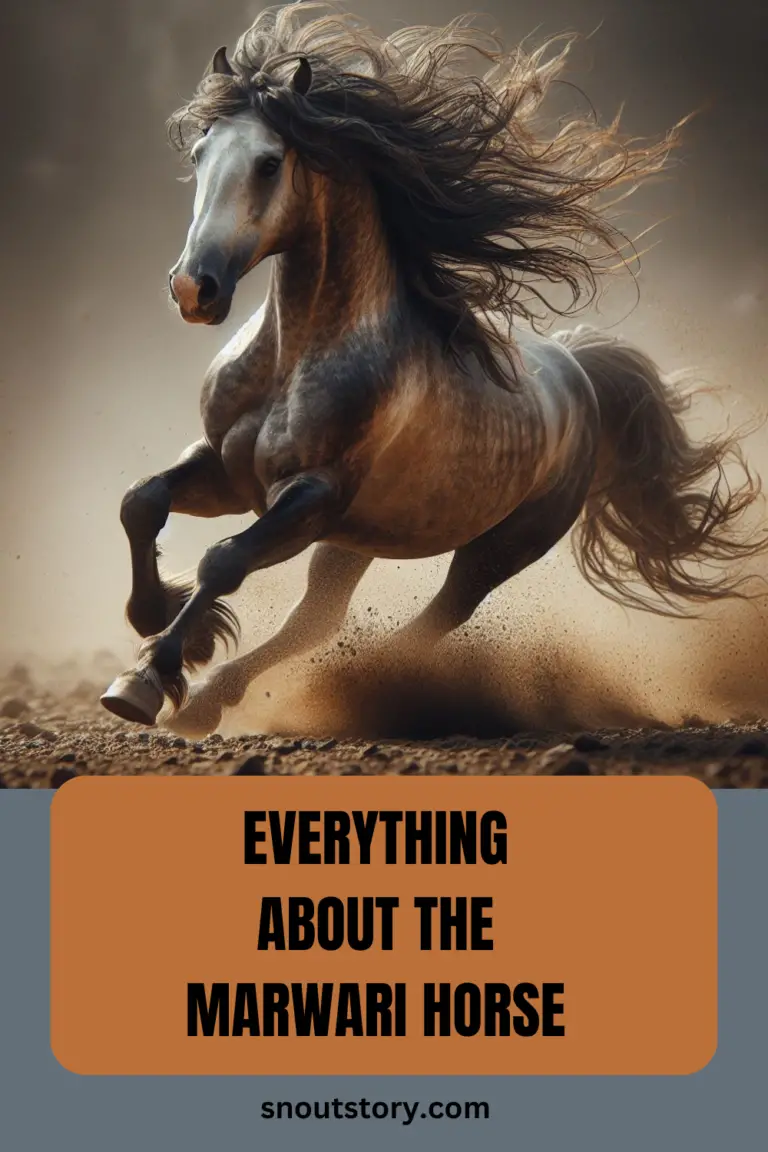Welcome to this detailed guide of training and riding Marwari horses! Renowned for their elegance, intelligence, and distinctively curved ears, Marwari horses have captivated equestrian enthusiasts worldwide.
In this comprehensive guide, we’ll delve into the art of training and riding these majestic equines, covering everything from fundamental training techniques to mastering advanced riding skills.
Whether you’re a seasoned equestrian or embarking on your first equine adventure, this guide aims to equip you with the knowledge and skills needed to establish a harmonious partnership with your Marwari horse, fostering trust, communication, and mutual respect along the way. We have embedded a detailed video in this post to make your Journey easy and swift just like your future horse rides.
So, saddle up and get ready to embark on an enriching journey with your Marwari companion!
Basic Training Techniques for Marwari Horses
When it comes to training Marwari horses, establishing a strong foundation through basic training techniques is essential. Begin by building trust and rapport with your horse, spending time together to develop a bond based on mutual respect and understanding. Introduce your horse to basic commands such as “walk,” “trot,” and “halt,” using clear verbal cues and gentle, consistent reinforcement.
Groundwork exercises, including lunging and long-lining, can help your horse become familiar with working in different environments and responding to cues from a distance. Incorporate desensitization exercises to familiarize your horse with common stimuli and reduce the likelihood of spooking.
Consistency, patience, and positive reinforcement are key to successful training sessions, allowing your Marwari horse to progress at their own pace while building confidence and obedience. With dedication and a thoughtful approach, you can lay the groundwork for a rewarding partnership with your Marwari companion.
Understanding the Temperament of Marwari Horses

Understanding the temperament of Marwari horses is crucial for developing a strong bond and effective communication with these majestic animals. Here are some key aspects to consider:
- Intelligent and Sensitive: Marwari horses are known for their intelligence and sensitivity, often displaying a keen awareness of their surroundings and the emotions of their handlers.
- High Spirit and Energy: With a proud heritage as war horses, Marwari horses possess a natural high spirit and energy level. They thrive on engagement and stimulation, requiring regular exercise and mental challenges to stay content and balanced.
- Resilient and Versatile: Despite their spirited nature, Marwari horses are remarkably resilient and adaptable, capable of excelling in a variety of equestrian disciplines, from dressage and jumping to endurance riding and traditional Indian equestrian sports.
- Bonding and Trust: Building a strong bond based on trust and respect is essential when working with Marwari horses. Patience, consistency, and positive reinforcement techniques are effective in earning their trust and cooperation.
- Responsive to Leadership: Marwari horses respond well to confident and assertive leadership from their handlers. Establishing clear boundaries and expectations helps create a harmonious relationship built on mutual understanding and communication.
- Emotional Sensitivity: These horses are emotionally sensitive creatures, often mirroring the emotions of their handlers. Calm and composed handling is key to keeping them relaxed and focused during training and riding sessions.
- Individual Personalities: Like humans, each Marwari horse has its own unique personality traits and preferences. Understanding and respecting their individual quirks and tendencies is essential for effective communication and partnership.
By acknowledging and embracing the temperament of Marwari horses, handlers can cultivate fulfilling relationships and unlock their full potential as equine partners.
Starting the Riding Journey with Your Marwari Horse
Embarking on the riding journey with your Marwari horse is an exciting and rewarding endeavor, filled with endless possibilities for growth and connection. Before you saddle up and hit the trails, it’s essential to lay a solid foundation of trust and understanding between you and your equine partner.
Spend quality time bonding with your Marwari horse on the ground, engaging in grooming sessions, groundwork exercises, and gentle interactions that foster a sense of mutual respect and rapport. Share moments of quiet connection and playfulness, allowing your horse to express their personality and quirks.
As you gradually introduce the saddle and bridle, pay close attention to your horse’s reactions and body language, ensuring they feel comfortable and relaxed throughout the process.
Remember, every step of the riding journey is an opportunity to deepen your bond with your Marwari horse and embark on a lifelong partnership filled with adventure and companionship.
Here are some step-by-step points for beginners starting their riding journey with a Marwari horse:
- Groundwork and Bonding: Begin by spending time with your horse on the ground, grooming, leading, and practicing basic commands such as halt, walk, and trot. This helps establish trust and respect between you and your horse.
- Introduce Tack: Familiarize your horse with the saddle, bridle, and other tack gradually. Start by allowing them to sniff and investigate the equipment before gently placing it on their back.
- Mounting Practice: Practice mounting and dismounting from a mounting block or sturdy platform, ensuring your horse remains calm and still throughout the process.
- Basic Riding Commands: Teach your horse basic riding commands such as walk, trot, halt, and turn. Use clear verbal cues and gentle pressure from your legs and reins to communicate effectively.
- Balanced Seat: Focus on maintaining a balanced seat and position in the saddle, keeping your weight centered over your horse’s back and maintaining soft, steady contact with the reins.
- Building Confidence: Gradually increase the duration and intensity of your rides as both you and your horse gain confidence and proficiency. Start with short, relaxed rides in a familiar environment before venturing further afield.
- Trail Riding: Introduce your horse to trail riding gradually, starting with easy, well-marked trails and gradually progressing to more challenging terrain as your skills and confidence grow.
- Continuous Learning: Riding is a journey of continuous learning and growth, so don’t hesitate to seek guidance from experienced riders, trainers, and instructors along the way. Take lessons, attend clinics, and participate in riding clubs or groups to expand your knowledge and skills.
By following these steps and approaching your riding journey with patience, consistency, and a positive attitude, you’ll lay a solid foundation for a fulfilling and rewarding partnership with your Marwari horse.
Developing Trust and Bonding Through Training

Building a strong bond and cultivating trust through training is a journey filled with rewarding moments and shared experiences. It’s about more than just teaching commands or mastering skills; it’s about fostering a deep connection built on mutual respect and understanding.
As you spend time with your horse, engaging in various training activities, you’ll gradually build rapport and develop a language of communication unique to your partnership. Celebrate the small victories together, whether it’s a successful obstacle overcome or a moment of genuine connection during a training session.
Consistency, patience, and positive reinforcement are key as you work together to strengthen your bond and deepen your trust. With each interaction, you’ll not only enhance your horse’s skills but also nurture a relationship that will continue to grow and thrive over time.
ALSO READ: Marwari Horse Care Tips (Every New Owner Must Know)
Advanced Riding Skills for Marwari Horses
Mastering advanced riding skills with Marwari horses requires dedication, patience, and a deep understanding of the breed’s unique characteristics. Here are some key aspects to consider:
- Form and Balance: Focus on maintaining proper posture and balance in the saddle to ensure a harmonious connection with your horse.
- Collection and Extension: Practice transitions between collection (shortening the stride) and extension (lengthening the stride) to improve flexibility and responsiveness.
- Lateral Movements: Explore lateral movements such as leg yields, shoulder-in, haunches-in, and half-pass to enhance suppleness and engagement.
- Flying Changes: Work on smooth and seamless flying lead changes to demonstrate control and coordination during transitions.
- Collection and Impulsion: Develop collection and impulsion through exercises like half-halts, transitions within gaits, and engaging the hindquarters.
- Jumping Techniques: If pursuing jumping, refine jumping techniques with proper approach, take-off, and landing positions, along with adjusting strides for different types of jumps.
- Trail Riding Skills: For trail riding, practice navigating various terrains, including hills, water crossings, and uneven footing, while maintaining confidence and trust with your horse.
- Cross-Training: Incorporate cross-training activities such as dressage, trail riding, and jumping to keep your horse mentally stimulated and physically fit.
Remember to progress gradually, listening to your horse’s cues, and seeking guidance from experienced trainers or instructors when necessary. With consistent practice and a focus on partnership, you can elevate your riding skills and deepen your connection with your Marwari horse.
Overcoming Challenges in Marwari Horse Training
Training Marwari horses can present various challenges, but with patience, understanding, and effective strategies, these obstacles can be overcome. Here are some common challenges and solutions:
- Sensitivity: Marwari horses are known for their sensitivity, which can sometimes lead to overreacting or resistance. Address this challenge by establishing trust through consistent and gentle handling, using positive reinforcement techniques, and gradually introducing new experiences to desensitize them.
- Independence: Marwari horses are known for their independent nature, which may result in stubbornness or assertiveness during training. Encourage cooperation by establishing clear boundaries, maintaining consistent communication, and providing engaging and purposeful activities to keep them mentally stimulated.
- High Energy Levels: Marwari horses tend to have high energy levels, which can make them spirited and occasionally challenging to manage. Channel their energy constructively through regular exercise, structured training sessions, and opportunities for free movement and turnout.
- Headstrong Behavior: Some Marwari horses may exhibit headstrong behavior, resisting cues or attempting to take control. Address this by establishing yourself as a trustworthy and confident leader through consistent and fair leadership, clear communication, and positive reinforcement for desired behaviors.
- Traditional Handling Methods: In some cases, traditional handling methods may not align with modern training principles, leading to conflicts or misunderstandings. Seek out trainers or resources familiar with Marwari horses and modern training techniques to ensure a harmonious and effective training process.
By approaching training challenges with empathy, adaptability, and a willingness to learn, you can build a strong and mutually rewarding partnership with your Marwari horse.
Riding Gear and Equipment for Marwari Horses

Choosing the right riding gear and equipment for Marwari horses is essential for both the rider’s comfort and the horse’s well-being. Firstly, selecting a well-fitted saddle is crucial, considering the Marwari’s unique conformation, which often features a high wither and a slightly arched back.
A saddle with ample wither clearance and appropriate tree width is recommended to prevent discomfort and pressure points. Additionally, opting for high-quality tack such as bridles, reins, and bits ensures clear communication between rider and horse, promoting responsiveness and obedience during rides.
When it comes to protective gear, investing in sturdy yet lightweight boots and leg wraps can safeguard the Marwari’s legs from injuries, especially during strenuous activities or trail riding. Lastly, don’t forget the importance of a properly fitting helmet for the rider, prioritizing safety above all else.
By carefully selecting and maintaining the right gear and equipment, riders can enhance their riding experience while ensuring the comfort and safety of their Marwari horses.
Safety Measures and Precautions While Training and Riding
Ensuring safety measures and taking precautions while training and riding a Marwari horse is crucial for a successful and enjoyable experience for both the rider and the horse. Firstly, it’s essential to establish a strong foundation of trust and communication with the horse through consistent and patient training sessions.
Always approach the horse calmly and confidently, maintaining a respectful distance to avoid startling or spooking it. Before mounting, thoroughly check the tack and equipment for any signs of wear or damage, ensuring everything is properly fitted and secure. When riding, always wear appropriate safety gear, including a well-fitted helmet and sturdy boots, to minimize the risk of injury in case of falls or accidents.
Additionally, ride in a controlled environment free from distractions or hazards, and be aware of your surroundings at all times. Lastly, listen to your horse and pay attention to its body language, responding to any signs of discomfort or stress promptly. By prioritizing safety and taking necessary precautions, you can create a safe and enjoyable training and riding experience for both you and your Marwari horse.
Summary
As we conclude this insightful exploration into Marwari horses, it’s evident that fostering a harmonious relationship with these magnificent animals requires patience, understanding, and a commitment to ongoing learning.
From mastering basic training techniques to navigating advanced riding skills, every step of the journey contributes to building trust and enhancing the bond between rider and horse. Understanding the temperament of Marwari horses and equipping yourself with the right gear and safety measures are vital components of this rewarding experience.
Despite the challenges that may arise along the way, overcoming them strengthens the partnership and deepens the connection between horse and rider. By embracing these principles and approaching each interaction with care and respect, you’ll embark on a fulfilling riding journey filled with mutual trust and companionship.
Recommended
Marwari Horse Care Tips (Every New Owner Must Know)
The Marwari Horse: A Complete Breed Guide

Vedant Narvekar is an experienced digital marketing expert with a profound love for nature and animals. With a career rooted in leveraging online platforms to drive engagement and promote meaningful causes, Vedant’s passion for animals inspired him to start Snout Story—a blog dedicated to educating people about pet keeping and sharing proper knowledge about caring for animals. Drawing on his expertise in digital marketing, Vedant utilizes his platform to advocate for responsible pet ownership, providing valuable insights on pet care, training, nutrition, and more. Through Snout Story, Vedant aims to empower pet lovers with the information they need to provide the best possible care for their furry companions, while also fostering a deeper appreciation for the natural world and the creatures that inhabit it.



